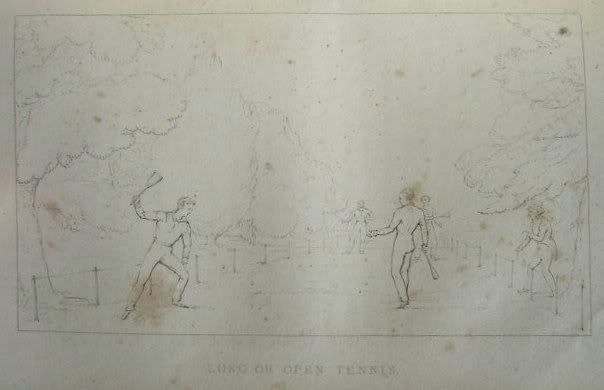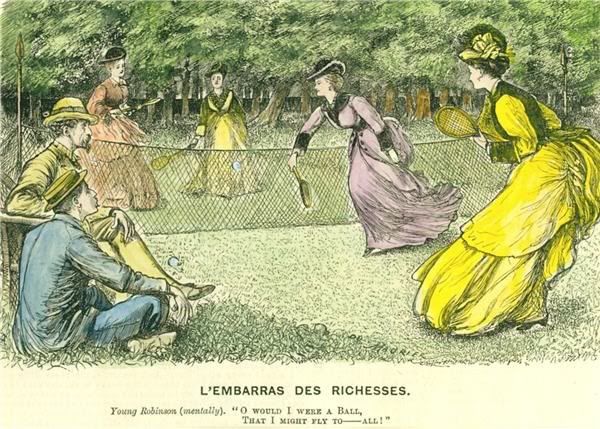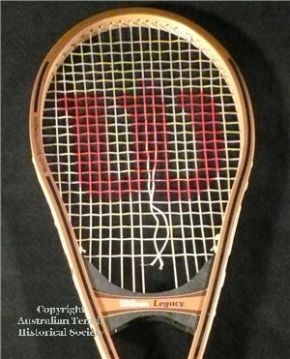Welcome to Australian Tennis History
Introduction
There have been many books written about the history of tennis with a focus on the UK and the USA. In Australia, unlike other local sports like Football, Rugby and Cricket, Tennis has suffered from a void where much of the history has simply vanished or focused only on the leading players of the time. Australia, does have a significant place in the annals of tennis and it a pleasure to present, in the one location, some interesting historical aspects of the game as it developed here and spawned a sporting industry which catered to the demand.
Various racquet sports have been tried over the centuries and although the modern game has its direct roots back into the Real Tennis, Rackets and Fives era it wasn’t until 1865 when Harry Gem and A.J.Perera played an outdoor grass court game on their home court “Fairlight” and proceeded to set up a club in Leamington Spa in 1873. Theirs was called “Pelota”. In 1874, Major Walter Wingfield launched his game of Lawn Tennis called “Sphairistike” and it achieved rapid buyer acceptance due his clever marketing of boxed sets and rules.
It is highly likely that many racquets were taken out onto lawns to play some form of hit to hit game, but it was the fast acceptance of Wingfield’s boxed game that tips favour his way as the inventor of the sport which has blossomed into the lawn tennis we enjoy today.
Below is a very rare picture from 1837, which shows an illustration of an outdoor game using the descriptive name “LONG or OPEN TENNIS”. Not only do you witness a doubles style event, but within the text is reference to scoring in 15/30/45, advantage & deuce, rough or smooth to determine serving and even mentions volleying.
Thanks to Sebastiaan Van Hoorn for the photo and information from the book titled “Games and Sports” by Donald Walker, Published by Thomas Hurst, St Pauls Church Yard 1837.

The Wingfield game to be marketed was also enhanced by a couple of other technological developments. First, the India rubber ball was invented and after some years being uncovered, cloth covered balls were developed. Second, lawn mowers now enabled the grass courts to be prepared with less effort.
Tennis created a social revolution appealing at first to women but then men as well. Courts were prepared for home entertainment, cities converted public gardens into tennis courts, and courts were constructed within cricket clubs, croquet clubs and within the grounds of churches. Wingfield’s wooden boxed sets of equipment were loaded on ships and transported to all corners of the world, including Australia, at a truly rapid pace. Tennis here spread quickly also, from homes to clubs, to far off country towns and although “Lawn tennis” was the name, Australian courts made from asphalt, sand, clay or plain dirt appeared everywhere.
A myriad of sporting goods manufacturers already producing cricket, royal tennis (UK) and in the USA baseball equipment, began designing and experimenting with new racquet designs, stringing techniques and tennis balls. Tennis fashion for the ladies and men was dashing and many clubs and local club competitions evolved. Tournaments like Wimbledon were created, The Davis Cup began in 1900, champions were held in high esteem and spectators were keen to see the best players in action.
The evolution of tennis, the playing techniques, the equipment, thestories and the memorabilia surrounding the game is remarkable. In Australia, tennis competitions evolved from club versus club to Intercolonial matches, to state championships and eventually the Australian Championships. While much of the equipment was imported at first, the Australian Tennis racquet and ball industry developed with many brands and models that no longer exist today. Occasionally you will find an item in a cupboard and wonder where this came from and who made it.
On this site you will learn about how tennis came to Australia. what companies made tennis equipment, how Australian players forged their reputations both here and abroad and be amazed at the memorabilia, such as vintage tennis racquets (or rackets) that collectors around the world simply adore.
The site will continue to evolve over time and we trust you will enjoy learning about new aspects of Australian tennis you didn’t know about before and encourage family members of former players and those still with us today to make contact and submit some photos or information that will help add some new pieces into this fascinating Australian story.
For inspiration, we thank existing collectors and publishers Jeanne Cherry (Tennis Antiques & Collectibles), Siegfried Kuebler (A Book of Tennis Racquets), our tennis researcher Clive Oliver, National and State libraries and individual contributors which have included clubs, players (relatives) and relatives of families involved in the local tennis industry. A special note of thanks also to USA collector Rolf Jaeger for supplying photos of some of his rare items in his second collection. His first collection was sold to Tennis Australia and is now in storage awaiting the construction of a permanent tennis museum at Melbourne Park.

Punch Magazine ( black & white Oct.10th 1874) but these hand coloured finishes of the original prints are very attractive.

You must log in to post a comment.